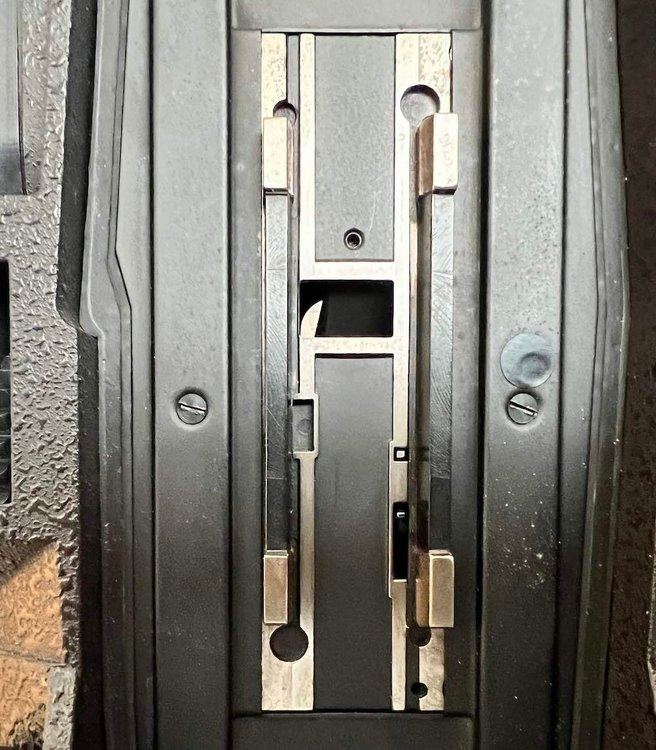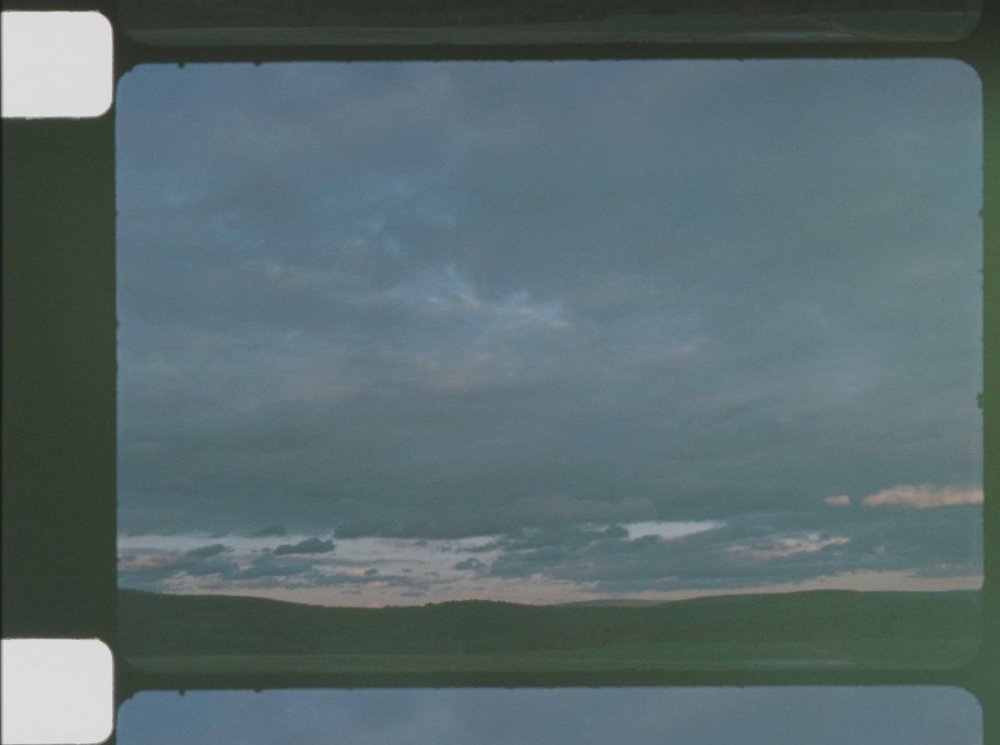
Ryland Bouchard
Basic Member-
Posts
11 -
Joined
-
Last visited
Profile Information
-
Occupation
Cinematographer
-
Location
Ashfield, MA
Recent Profile Visitors
The recent visitors block is disabled and is not being shown to other users.
-
ARRI SRI Main Board & Gate / S16 Question
Ryland Bouchard replied to Ryland Bouchard's topic in ARRI
Hi Dom, Thank you for the helpful and informative response. I am working on sending the camera back to the seller. Thanks again! Ryland -
ARRI SRI Main Board & Gate / S16 Question
Ryland Bouchard replied to Ryland Bouchard's topic in ARRI
Hi aapo and Mark, Thanks so much for the feedback! aapo: Yes the 3 ohm reading was with the power off and battery removed. Your analysis of the fault makes sense to me and it did seem to me like there was likely an open transistor/FET on the main board (or elsewhere) if there wasn't a failed capacitor hidden somewhere in the chassis. As for the guide rail on the left side of the gate - yes, it looks like it's pretty much gone. That's very helpful to know, and I'll make sure to keep an eye out for this in the future. Mark: I agree it doesn't feel like a keeper. The seller should have accurately disclosed the faults and gate modifications - so I'll likely send it back. I like the lens choices and simplicity of the older cameras but finding one in good shape is such a challenge. Thanks again! -
Hello, I purchased an ARRI SRI, with German eleectronics, with the hopes of improved registration over my Bolex H16 EL. It was sold to me as "functional" from a camera broker. Of course this functional camera arrived with both of the main fuses blown - and after I replaced the fuses and applied power the camera motor runs immediately even with the main switch in the off position. I had planned to have the camera serviced anyway, but I am now debating whether this particular camera is just not worth the potential repair costs and should be returned to the seller. In addition to the potential electrical/main board issue it looks as though the camera has been through an "upgrade" to S16, with a widened gate and viewfinder that says SR3, but has not been recentered. Attached are photos of the widened gate. I'm really not interested in S16, as I prefer R16, but was hoping someone experienced with the SRI could let me know if the work done on this gate looks like a DIY job that would scratch the film or be problematic in any way. I assume recentering the viewfinder/lenses is an expensive change which is why it was not performed? Also, has anyone had a similar issue with applying power and the camera running immediately? No LEDs light up, the camera motor just stars spinning as soon as the power cable is inserted regardless of the main switch position. There is continuity, or extremely low resistance (3 ohms) between the two power pins, which would seem to imply a faulty capacitor or other shorted component inside the camera body, unless I'm missing something. With the main board removed from the connector the short is no longer present, and I did not find any shorted tantalum capacitors in my quick check on the main board assembly. I've discussed sending the camera off to a few repair shops, which I'm happy to do, but I'd like to know what I'm getting into with the S16 work that's been performed. Thank you in advance for any help/insight you can provide. Ryland
-
Green flashes on 16mm film (Bolex H16 EL)
Ryland Bouchard replied to Ryland Bouchard's topic in General Discussion
Thanks again for everyone's input on this issue. I wanted to hold off posting until I had more information. I was able to confirm with the lab that this was a problem on their end since it appeared on a roll of film sent in by someone else. The lab stated that they have made adjustments to their magazines and it hasn't shown up on recent runs of film. I just wanted to update this topic in the event that someone else has this or a similar problem in the future. Ryland -
Green flashes on 16mm film (Bolex H16 EL)
Ryland Bouchard replied to Ryland Bouchard's topic in General Discussion
Hi Dom, Yes, that makes sense to me. Unfortunately it was 26 rolls that were processed / scanned at two different times (the same lab). Fortunately most of the footage can be edited around the flashes, but I'll follow up with the lab and see if they can offer any assistance. For those of you shooting 16mm in the US, who do you recommend for processing/scanning? I reached out to Kodak in NY but they don't process E-6 film. Thanks again, Ryland -
Green flashes on 16mm film (Bolex H16 EL)
Ryland Bouchard replied to Ryland Bouchard's topic in General Discussion
-
Green flashes on 16mm film (Bolex H16 EL)
Ryland Bouchard replied to Ryland Bouchard's topic in General Discussion
Hi Doug and Tyler - Yes the flash extends out to the full width of the scanned film. There's no sync lamp installed. Many of the shots where the flash occurs the camera is stationary, so I don't think the camera movement in the falls video is part of the issue. I'll ask the lab if there's anything on their end that has changed. If it's only on my footage I guess it has to be the EL cameras or Kodak. I guess I can try a different lab and see if the problem disappears. I'll attach a couple more screenshots from stationary shots - both from the #2 camera. The above screenshots are from the #1 camera. Thanks again, Ryland -
Green flashes on 16mm film (Bolex H16 EL)
Ryland Bouchard replied to Ryland Bouchard's topic in General Discussion
Hi Doug and Simon, In the falls movie it happens again @ 2:07-2:08, if that's helpful. It's the same sort of green flash on many rolls of film, including some where the ambient light is extremely low (dusk and microscope footage). I don't think it's related to a time lapse light leakage - last year I had multiple day long time lapse shots, filmed in full daylight, without this problem. The reason I thought it was something mechanical or chemical is that none of my previous footage had this issue. So I checked the recent footage shot with the two different cameras and both cameras had the flash show up on different rolls of film. It seems unlikely that both cameras would start having a similar problem at the same time. I wonder if while changing lenses light is finding a way in through the closed shutter/reflex prism assembly? However, if that was the case wouldn't the flashes be mostly in-between shots, rather than in the middle of them? On the H16 EL the filter is placed behind the bayonet lens mount and the EL housing is generally well designed to prevent leakage. A problem at Kodak seems to make sense, but I wonder why I didn't come across this issue on previous rolls of film. Attached is another screenshot of the problem during a shot just before dark, where the ambient light was very low. Thank you, Ryland -
Green flashes on 16mm film (Bolex H16 EL)
Ryland Bouchard replied to Ryland Bouchard's topic in General Discussion
Hi Simon, Thank you very much - that's a relief it's not a problem with the camera or processing! All the best, Ryland -
Green flashes on 16mm film (Bolex H16 EL)
Ryland Bouchard replied to Ryland Bouchard's topic in General Discussion
Hi Tyler, You can see it flash @ 1:15 on this video: Thank you, Ryland -
Ryland Bouchard started following Green flashes on 16mm film (Bolex H16 EL)
-
Hello, New forum user here. I'm having difficulty troubleshooting these seemingly random green flashes on my processed 16mm Ektachrome 100D film. I have two Bolex H16 EL 16mm cameras and footage filmed with both cameras have this issue (regardless of the lens used). It happens anywhere from once per 100ft roll to several times per roll. Last year I filmed a few thousand feet of film without these flashes, but the last two batches of film I've had processed have had this issue. The attached still is in the middle of a time lapse, where the camera wasn't moved or handled at all for an hour - and the rest of the footage from the shot is fine. This happens with both new Ektachrome 100D direct from Kodak, and also expired 100D - so it doesn't seem like it is an issue with the film stock. Since it happens with both cameras and randomly, it does not seem like a light leakage problem with one of the cameras. I asked the lab doing the processing/scanning and they didn't have any ideas as to why this would be happening. Any ideas or suggestions would be greatly appreciated. Thank you, Ryland








